Travel Italy slowly with your taste buds
Photo courtesy/Sun Fangbin

As the saying goes, "Reading thousands of books is not as good as traveling thousands of miles." It is also said, "Traveling over thousands of mountains and rivers, eating all over the world."
The most memorable thing about traveling is what you see and enjoy the local food. The Renaissance is the "rebirth" of art, literature, faith, culture and science. This time I participated in the Italian Renaissance trip of the "Resources for Christ Association" and tasted local Italian food for the first time. My taste buds were also "amazed". Plant a new life!
The main itinerary of the Renaissance Tour is in northern Italy, including Milan, Parma, Florence, Siena, Bologna, Padova, Venice and Verona. Italian food is famous for its rich and diverse taste feast, and the ingredients and cooking methods vary from region to region. Many classic dishes that were originally local have spread throughout the country, incorporating local characteristics and evolving into different classics.
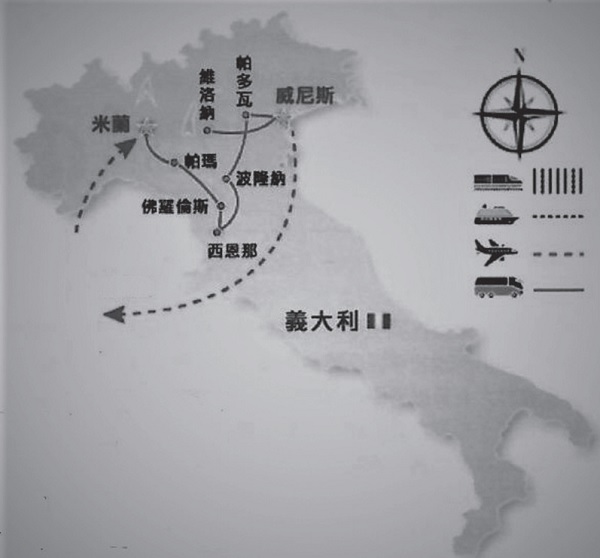
▲A city to travel to.
slow food culture
The team leader once shared that when McDonald's entered the Piazza di Spagna in Rome in 1986, Carlo Petrini led the people to declare through action: "Fast food is not Italian food!" He proposed "slow food", which still attracts attention today. Reflective social movements. What is "Slow Food"? The ingredients are cultivated and cooked at a slower pace, so you can eat them slowly and enjoy high-quality, pure food. The true meaning of "slowness" means that if you can master the rhythm and taste of life, your life will be richer.
Slow food is also an attitude that emphasizes the protection of local traditional food culture through food. Italians attach great importance to the preservation of traditional culture and the original taste of food grown in different lands. They do not pay attention to diplomas but to skills. Enjoy life seriously and live leisurely at your own pace. "Food" and "pleasure" are both indispensable. This philosophy of life just benefits travelers. The cooking method is natural and healthy and emphasizes the balance of taste. It uses local fresh ingredients to create taste levels from different places, and combines them with unique natural landscapes and relics of civilization evolution to maximize visual and taste bud satisfaction.
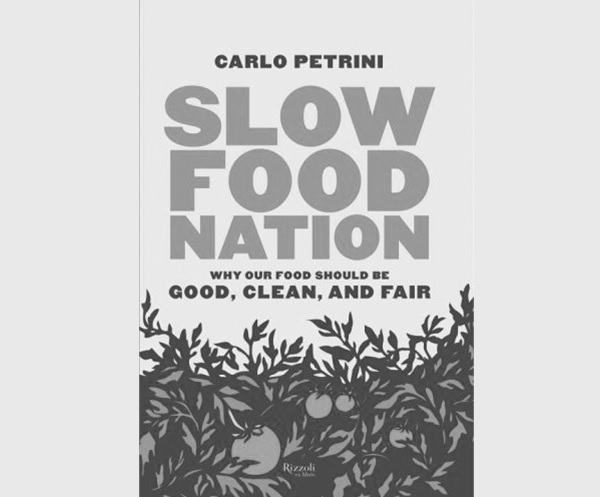
▲The country of slow living.
The Golden Liquid of the Mediterranean─Olive Oil
Olive oil is the juice pressed from the olive fruit, with the water removed. Italians call unfiltered olive oil Verdenso, which originally means "dark green". Handmade olive oil is greener than ordinary extra-grade cold-pressed olive oil, and is naturally rich in fruity oil aroma, which is secretly released during the cooking process. In addition to the impressive color and smell, the slight sediment at the bottom of the bottle is proof that its ingredients are retained. The highest grade of olive oil is "Extra Virgin Olive Oil", which is suitable for cold dressing and dipping, but is not suitable for high-temperature frying or deep-frying. The second-pressed "pure olive oil" (100% Pure Olive Oil) is suitable for frying, boiling, sautéing, frying and cold salad. You can finish one bottle at a time. The olive tree is the longest-lived tree species in the world, and can live for hundreds to more than a thousand years. The adult tree is about two stories tall. It usually stops growing taller after it reaches fifteen meters, but the trunk will grow laterally, getting longer. The bigger. Olive oil has a wide range of uses and is also known as the "Mediterranean golden liquid".

▲Olive trees full of fruit.
In the story of Noah's Ark in the Old Testament, when the dove sent by Noah flew back, it carried olive branches and leaves in its mouth to represent the receding of the flood. At the same time, olive branches and leaves have long represented peace and friendship. The most striking metaphor of the olive tree in the Bible is the relationship between the Israelites and the church described in Romans 11. Psalm 52:8 reads: “As for me, I am like the green olive tree in the temple; I rely on God’s love forever and ever.” The olive tree mainly symbolizes loyalty and steadfastness.
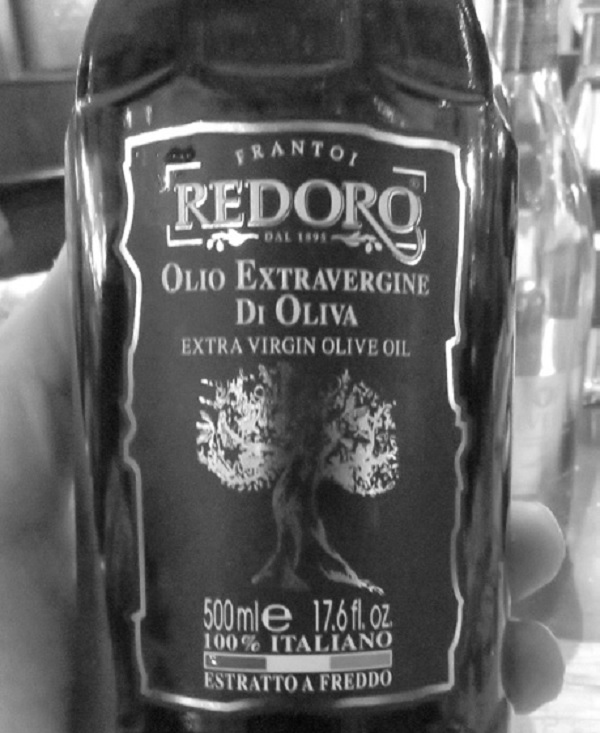
▲Mediterranean gold liquid.
Sour and fragrant aged grape vinegar
Italian aged grape balsamic vinegar, also known as "Balsamic Vinegar", is mainly produced in the Modena region, not far from Bologna. It is said that many years ago, a careless winemaker left a batch of bottled wine in an oak barrel. When it was discovered, the wine had become sour, creating the first batch of vinegar, which was very delicious. Since then, families in the Modena region of Italy have developed a tradition: brew grape vinegar when their children are born, and bottle it as a gift when they get married. This is similar to China's daughter red.
The main method of making Italian aged grape vinegar is "secondary concentration". Olive oil and grape balsamic vinegar are essential dipping sauces for meals, and can be paired with Ciabatta bread or crispy Grissini breadsticks; the crispy crust and bread pores are full of sour and sweet flavors. The vinegar liquid has a chewy texture and is so delicious that it will make you "excited"!
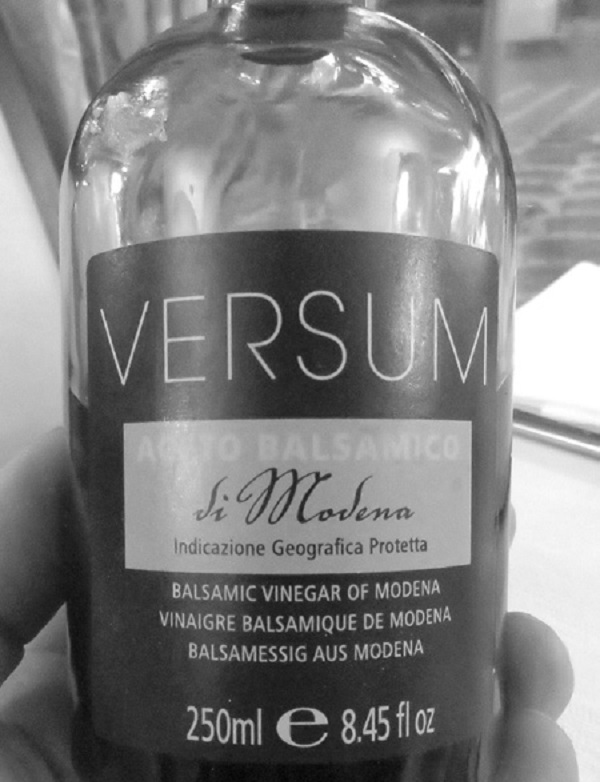
▲Aged grape vinegar.
Thick and delicious Italian risotto
Risotto is a classic Italian dish in which Italian rice grains are cooked in stock until they are creamy and rich. The stock is usually based on meat, fish or vegetables. Many risottos include cubes of cream, Parmesan cheese, white wine and onions. To cook a delicious and authentic traditional Italian risotto, be sure to use Italian rice, such as Arborio, Carnaroli and Vialone Nano.
Northwest Italy can be said to be the birthplace of "traditional Italian risotto". The rice produced here has larger grains and is very suitable for cooking risotto. Cooking traditional Italian risotto requires time and patience. Add the stock gradually, allowing the rice grains to slowly absorb the soup until it becomes soft, but the rice core remains chewy. Risotto alla Milanese will be served together with Ossobuco alla Milanese, which is as famous as Spanish seafood risotto!
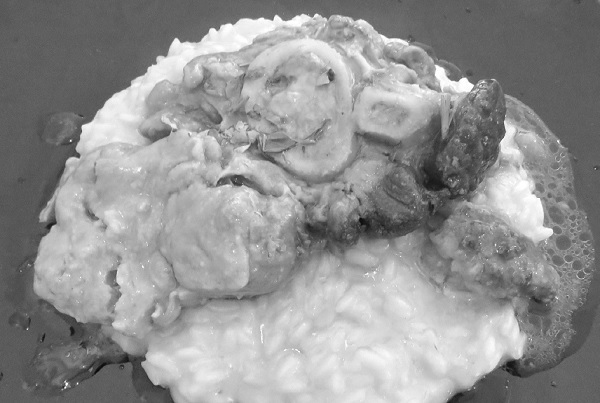
▲Thick and delicious stewed rice.
Parma ham and parmesan cheese
Prosciutto di Parma (Prosciutto di Parma) is a ham produced in Italy, which is pickled and air-dried, then cut into thin slices and eaten raw. Among them, the ham produced in Parma is the most famous. It’s similar to China’s Jinhua ham, but the way to eat it is different. Parmesan cheese (English: Parmesan, meaning: Parmigiano-Reggiano) is literally translated as Parma local cheese. This is a hard dry cheese that is cooked but not pressed. Many cheese lovers call this cheese the king of cheese. The cows that provide the raw milk for Parmigiano-Reggiano are fed only grass or hay, and the production and maturation process takes two years. Each round of Parmigiano-Reggiano cheese is inspected during its early stages of maturation, when the cheese is still soft and tender, and then stamped with an official stamp and placed in storage to mature. Cheese that does not reach the target is thrown to the pigs, and these cheese-eating pigs are the source of Parma ham. Parmigiano-Reggiano can be grated into a powder and sprinkled over pasta, or served in a generous chunk with balsamic vinegar. Thinly sliced Parma ham and block Parmesan cheese are rich in sea salt flavor, and gourmets who like strong flavors will definitely like it.
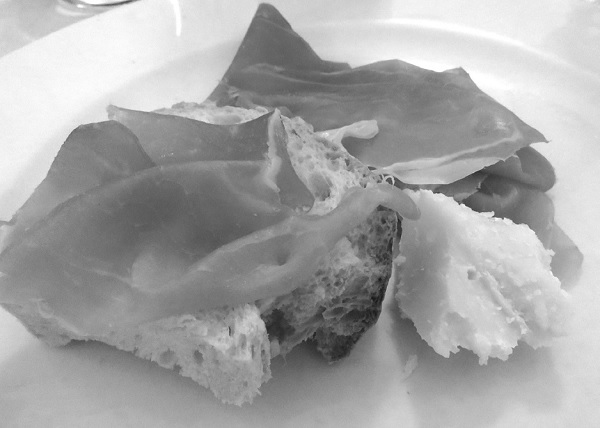
▲Parma ham and Parmesan cheese.
Florentine Tripe or Beef Sandwich
Tripe sandwich (Panino con il Lampredotto) or beef sandwich (Panino con Bollito) is slowly simmered with beef bone stock, and the tripe or beef is simmered until it is soft and tasty. When the customer orders, it is served with a crispy texture. The slightly moist meat is sandwiched between the Italian bread. You can also order the meat a la carte and top it with the stewed sauce. You can add a special herb chili sauce to make your tongue slightly numb. After a burst of spicy numbness, the fragrant sauce will coat the tip of your tongue and mix with the umami flavor of the beef. It melts in your mouth and is really delicious. This is a specialty of the Florence Central Market. The local tour guide allowed us to taste the delicious food on the street, giving it the atmosphere of a night market roadside stall.

▲Delicious beef sandwich on the roadside.
Variety of pastas and sauces
Pasta’s original meaning is kneaded dough, and more than half of the pasta options on Italian restaurant menus are pasta. Italians who love gourmet food have put countless ingenious ideas into the preparation of pasta, making pasta one of the most diversified Western-style pastas today. For example, the most common long and thick Italian noodles (Spaghetti), bow tie noodles, spiral noodles, macaroni noodles, pen tube noodles, shell noodles, cat ear noodles (Orecchiette), Italian ravioli (Tortellini), lasagna ( Italian Lasagna) etc. There are so many shapes that we can’t even count them, and sometimes they have different names for different sizes. In the ever-changing scene, we once again see the creativity of Italian cooking.
Ravioli is also a traditional Italian pasta. Meat or vegetables are wrapped in two layers of skin and then boiled in hot water. The sauce can be ground beef, or a tomato-based sauce, or it can be made with beef meatballs, olive oil, onions, garlic, rosemary and red wine. Gnocchi is a round, fat little dough made from potatoes. It has a thick texture and is a bit like the northern Chinese dish Gnocchi. Sauce, like the Italian flag, can be divided into three colors:
1. Pesto Sauce
Made with basil leaves, pine nuts, garlic, parmesan cheese, and olive oil. The Italian word for Pesto means to beat or crush. In addition to being used on noodles, pesto is also great as a dipping sauce for chicken or fish, and can also be spread on bread. Basil itself is very compatible with tomatoes, and basil is often used in dishes using tomatoes.
2. Alfredo Sauce
A white sauce made from fresh cream, cream, flour, Parmesan cheese powder, and garlic. This is an authentic Italian white sauce. Parmesan cheese is a must in the sauce, so béchamel is rich, rich, and high in calories.
3. Marinara Sauce
Sauté onions and minced garlic before adding tomatoes and some seasonings to cook. It has a sweet and sour taste, is delicious and easy to preserve. It can be used to cook pasta, bake pizza, spread bread, and accompany meat and seafood. In addition, the world-famous tomato meat sauce (meaning: Ragù alla Bolognese), or transliterated as Bolognese meat sauce, is a sauce made from Bologna, Italy. It is made from meat and tomatoes as the main raw materials. It is often eaten with Italian pasta. .
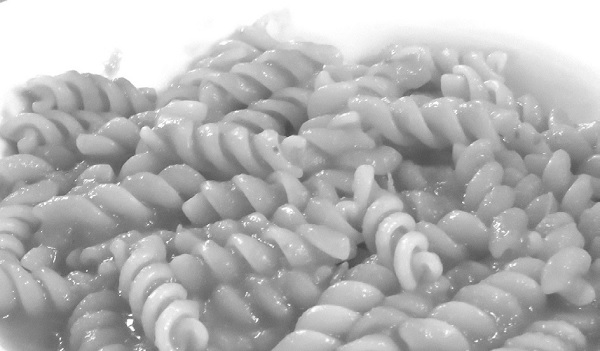
▲Red sauce spiral noodles.
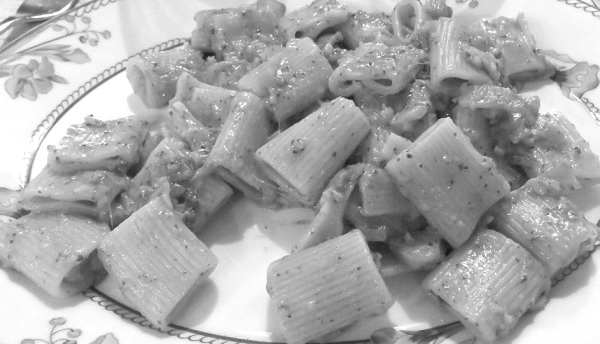
▲The delicious pesto noodle soup.
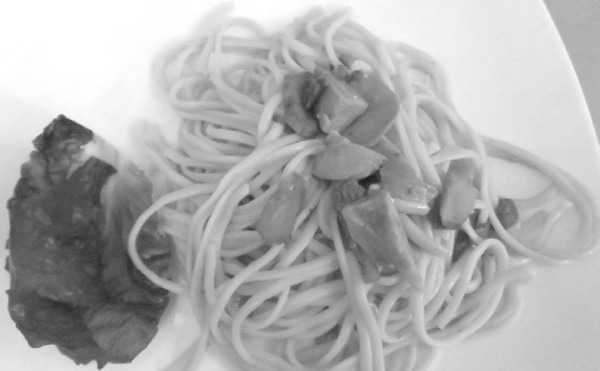
▲The ready-to-eat white sauce is hidden between the noodles.
Please take me away─Venice Tiramisu
Tiramisu is the most classic dessert in Italy, originating from Venice and available in various shapes. Beat mascarpone cheese, eggs and sugar into cheese milk foam, then put Lady Finger Biscuits dipped in espresso and Marsala wine or cherry wine, and lightly spread on top of the dessert. Layer with unsweetened cocoa powder. The moist cake has a cake-like texture, is fluffy and refreshing, with the aroma of mellow wine and ripe coffee, and is filled with smooth and charming cheese milk egg foam, paired with slightly bitter chocolate, which has captivated the hearts of countless people. The melt-in-the-mouth texture is known as the "taste of heaven".
It is said that during the First World War, the wife wanted to prepare snacks for her husband who was about to go off to war, but there were no good ingredients at home, so she used all the edible cookies and ingredients left at home to make a pastry, which is tiramisu. . This soldier would think of his loved ones at home when he ate tiramisu on the battlefield. The original meaning in Italian is "lift me up." Another explanation is "please take me away!" It takes away not only delicious food, but also love and happiness. It turns out that behind the delicious desserts there are poignant love stories and warm blessings.
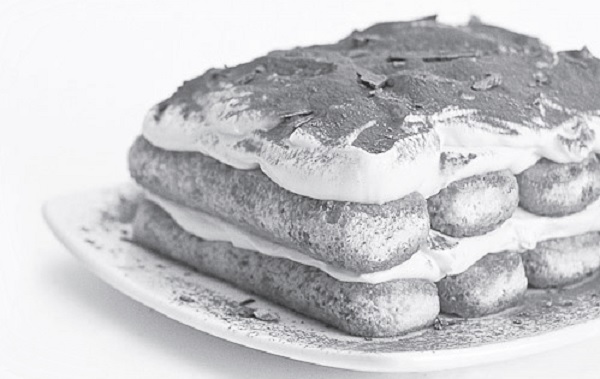
▲Tiramisu that takes away the longing.
Thousands of Italian-style ice creams
Gelato in Chinese can be translated as Italian ice cream or Gelato. It is traditionally hand-made rather than mechanically produced. Therefore, the recipe is completely based on the author's mood. The same taste may be different in different stores; even if it is made in the same store, Different batches may have different tastes, let alone thousands of flavors. In addition to the traditional small-scale Girardeau stores, chain stores have also appeared one after another, but they maintain the traditional production method. Girardeau pays attention to freshness and is freshly made and sold every day to ensure a fresh taste. It is low in fat and has no artificial additives. It tastes rich and smooth, refreshing and not greasy, and you will never get tired of eating it. It’s a waste of time if you don’t eat a few balls of gelato in Italy! Girardeau not only has many flavors, but we also tasted different flower shapes, which are just like the exquisite presentation in cuisine, with perfect color, aroma and taste.
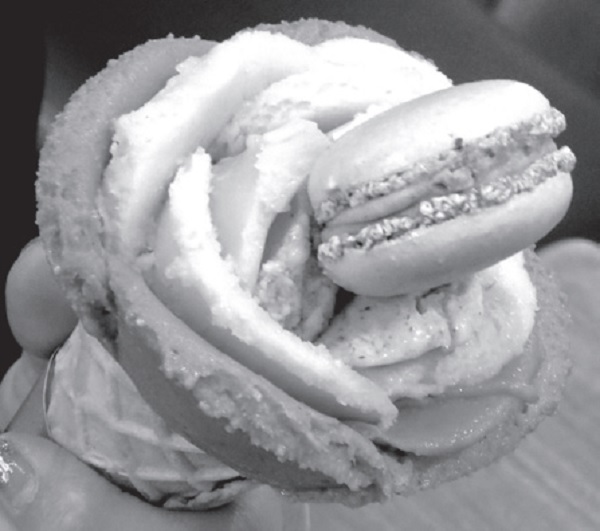
▲Girardeau as beautiful as a bouquet.
Italian wines to pair with food
The perfect pairing of Italian wine and food is also a highlight. Italian wines are just like Italians, with unique personalities and basically no similar styles. For those who truly love wine, Italian wine is an absolute paradise for the taste. You can find a match of delicious food from any place in the world from Italian wine.
Italians drinking wine boldly can be seen everywhere on the streets, which reminds people of Bacchus, the god of wine in Roman mythology, or Dionysos, the god of wine in Greek mythology. At the Wufeizi Art Museum, I saw the work of the master Caravaggio - the young Bacchus, a drunken and beautiful young man, very unrestrainedly praising the rich nature and the blessings of life. Teacher Zhou Lanhui, who led the team, gave an in-depth explanation in front of the painting and was deeply impressed. This half-naked Bacchus is leaning on a chair, holding a glass of red wine in his hand. His slightly drunk and lazy eyes reveal an atmosphere of ambiguity and pleasure, seeming to invite everyone to drink and have fun with him.
During the trip, I drank a lot of mellow red wine, sweet white wine, and refreshing fruit wine (a popular summer wine in Italy) to match my diet. I also tasted Super Tuscan (Toscana) wine. Legal production area wine (DOC) and red wine from odd regions (Chianti). Behind the delicious food and wine, the Renaissance journey also witnessed the complicated history of Western art. Many masterpieces were created around the classic stories of Greek and Roman mythology and the Bible. It has long become an integral part of the entire Western culture and continues to influence the West. the development of culture, literature and art.
Quick espresso Italian coffee
Espresso means "extremely fast" in Italian. Through the pressure of steam, the coffee liquid is extracted instantly. Because this method can preserve coffee oil for a long time, the taste is mellow and thick, and the acidity and bitterness are balanced, so it is called a work of art in coffee. In addition, espresso is also the basis for many types of coffee, including more than fifty types of fancy coffee, such as Coffee Latte, Cappuccino, Macchiato, and Mochaccino. They are all made with espresso as the base and are constantly changing.
Italians have a conservative attitude towards traditional food culture and love ancestral recipes and secret recipes. In their minds, "La Mama's cooking" is the best! Taking the time to prepare ingredients, roll out dough, simmer slowly, etc., food not only satisfies physical needs, but also has an emotional connection. This is a concept that restaurants cannot replicate. The food at famous restaurants is delicious, but it lacks flavor, and so does the coffee.
Italians prefer small cups of dark espresso. Have a cup after a meal, a cup during a break at work, and even more with coffee when smoking. We are used to meeting up with friends to sit in a coffee shop for an afternoon, or bringing a book or laptop to read or work in a coffee shop. Italians stand at the bar and communicate with the boss or waiter. The coffee shop owner near their home may have watched them grow up; the coffee shop next to the company may have accompanied them all the way to promotion. The precious emotions between people cannot be copied, let alone replaced. This is a very unique food culture.
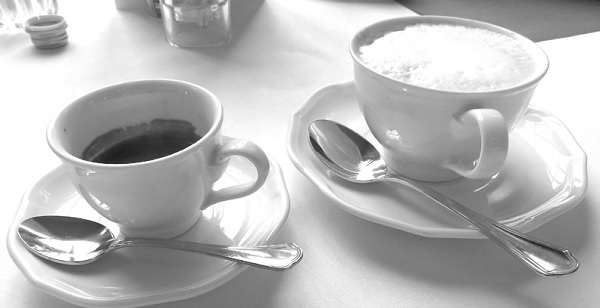
▲A must-have when traveling─espresso.
To brew good espresso, there are four important elements: the coffee bartender (Mano), the thickness of the coffee bean grinding (Macinazione), the coffee bean recipe (Miscela), and the espresso machine (Macchina). The coffee cup it is served in is also very important. The shape of the cup will affect the taste and heat preservation effect.
Italians hold the cup handle elegantly between their index finger and thumb, making the coffee drinking scene instantly relaxed. The thick design of the cup rim is also very different from ordinary coffee cups, just enough to allow lips to take in every sip of fragrant coffee without spilling. The opening of the coffee cup is just big enough to cover your nose when drinking coffee, and the nostrils are immediately filled with the strong aroma of coffee. A carefully crafted cup of espresso includes the sweetness and sourness of the taste, as well as the change in temperature. It all depends on the skill and dedication of the coffee bartender. It is really an art!
American writer Henry Miller said: "The destination of a traveler is not a place, but a new way of looking at things." Being lucky enough to participate in this Renaissance journey has not only gained a lot for the body and soul, but also improved artistic cultivation. Also made a lot of progress. Thanks to Teacher Gao Lili, Teacher Zhou Lanhui and all team members for sharing. Along the way, we have seen the Italians’ dedication to their own food culture, which also reminds us that we should be diligent in promoting and guarding our local food culture. Although it has been a long time since I returned home, I am still fresh in my mouth and full of happiness when sorting out photos and collecting information! Italy is really beautiful and I look forward to visiting again.
 Author profile Sun Fangbin is from Taiwan and now lives in Michigan, USA. His family of three lives a simple life. Love photography and painting.
Author profile Sun Fangbin is from Taiwan and now lives in Michigan, USA. His family of three lives a simple life. Love photography and painting.
